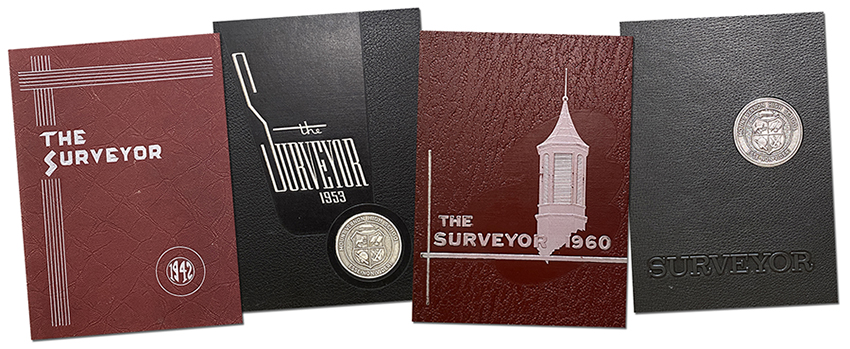School History (1939-1973)
The Original Mount Vernon High School
Mount Vernon High School was established in 1939. During the 1939-40 school year, students began the fall semester at Lee-Jackson High School, which was located in what is today part of the City of Alexandria, but at that time was part of Fairfax County.
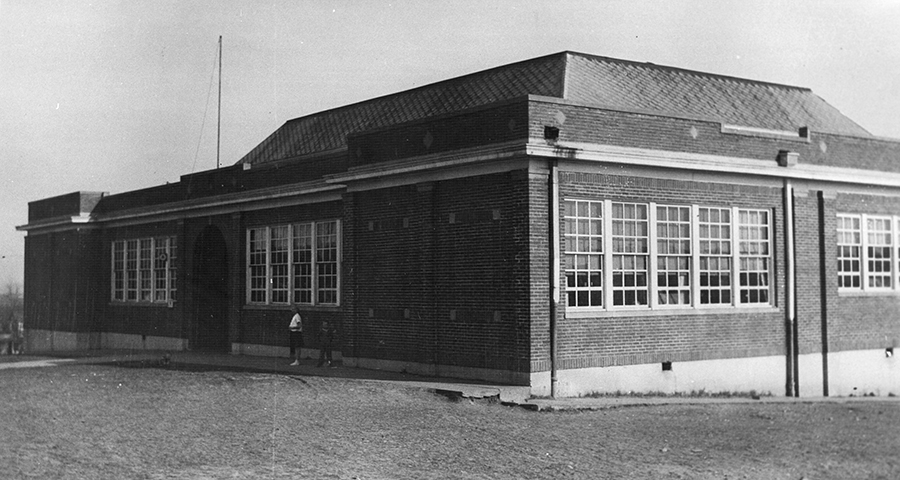
Mount Vernon was scheduled for completion by November 1939. However, the building wasn’t finished until shortly before winter break in December 1939. Because of the timing, the Fairfax County School Board decided to delay the opening of the school until the students’ return from break in January.
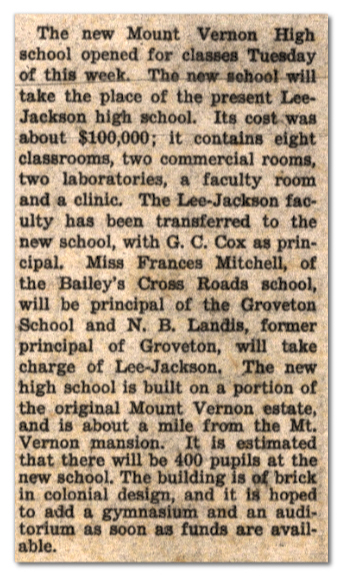
Mount Vernon High School opened its doors to students for the first time on January 2, 1940. A dedication ceremony was held two weeks later. During the ceremony, Mount Vernon’s first principal, G. Claude Cox, gave the welcome address and guests were treated to a musical performance by the Glee Club.
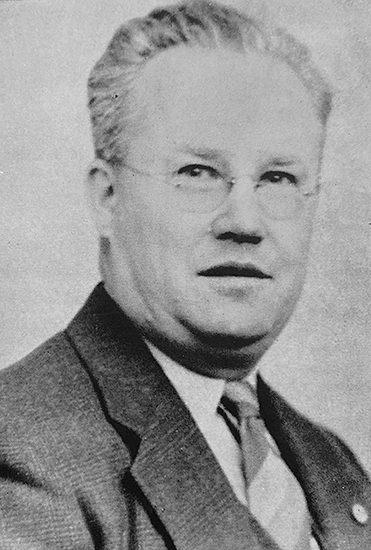
Constructing the Original Mount Vernon High School
In December 1937, W. T. Woodson, Superintendent of Fairfax County Public Schools (FCPS), presented a letter to the School Board in which he stated the need for a new high school in the Mount Vernon area. Referred to as Woodlawn High School during the initial planning process, the new school was given the name Mount Vernon by the School Board on October 26, 1938. At that time, site selection for the new high school was underway. Ultimately, an 8.88-acre property fronting on Route 1, then called Washington-Richmond Highway, was selected.
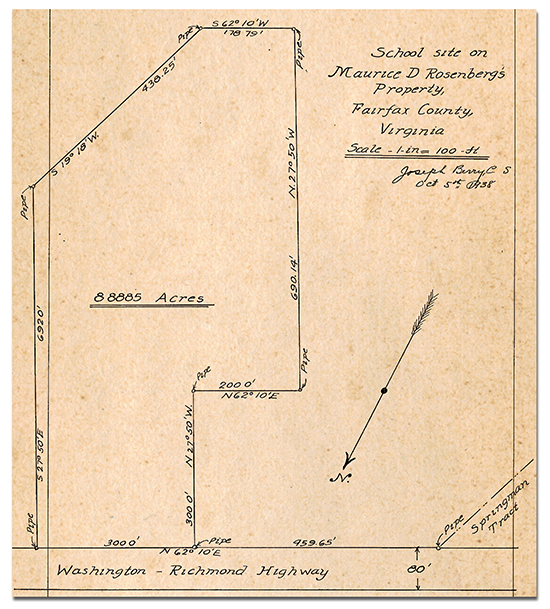
In the fall of 1938, with the Great Depression gripping the nation, the School Board applied for grant funding from the Federal government’s Public Works Administration (PWA) to build new schools. The grant application was designated “P.W.A. Docket No. Va. 1058-F, Fairfax County Schools,” and it included a request for $100,000 to build Mount Vernon High School.
In December 1938, workers began clearing the Mount Vernon High School site. Three months later, on March 8, 1939, the School Board awarded the contract for the construction of Mount Vernon to general contractor C. E. Nuckols of Richmond, Virginia, at a cost of $93,080.
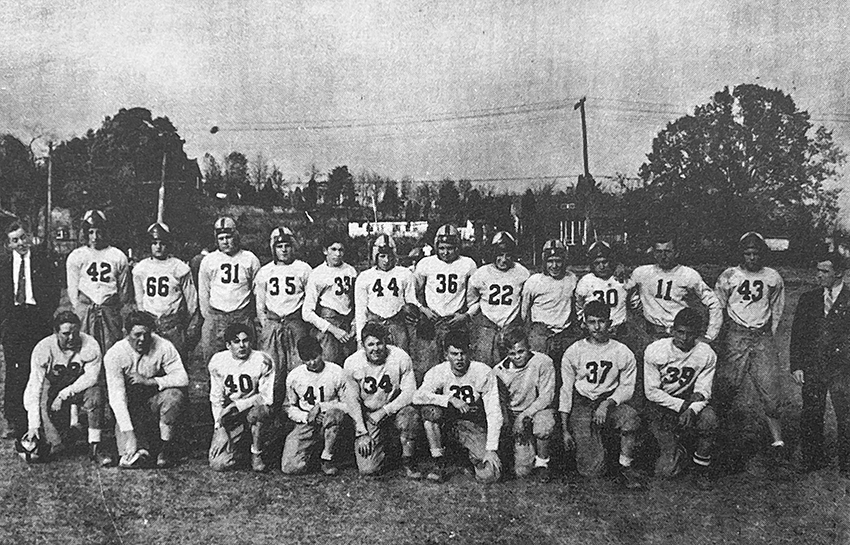
Five High Schools
In 1938, there were only five public schools in Fairfax County offering high school coursework, namely Fairfax, Franklin Sherman, Herndon, Jefferson, and Lee-Jackson. The schools had a combined enrollment of about 1,400 students and educated children in grades 8-11, with the exception of Franklin Sherman which was limited to grades 8 and 9. Academic work was extended to include the 12th grade beginning in September 1946.
Only white children were permitted to enroll in the aforementioned five high schools because public schools in Fairfax County were racially segregated until the 1960s. Until the opening of Luther Jackson High School in 1954, Black children residing in Fairfax County had few options available for secondary education. Students could attend the Manassas Industrial School, which required a lengthy trip by school bus to Manassas, or families could pay tuition to send their children to school in Washington, D.C.
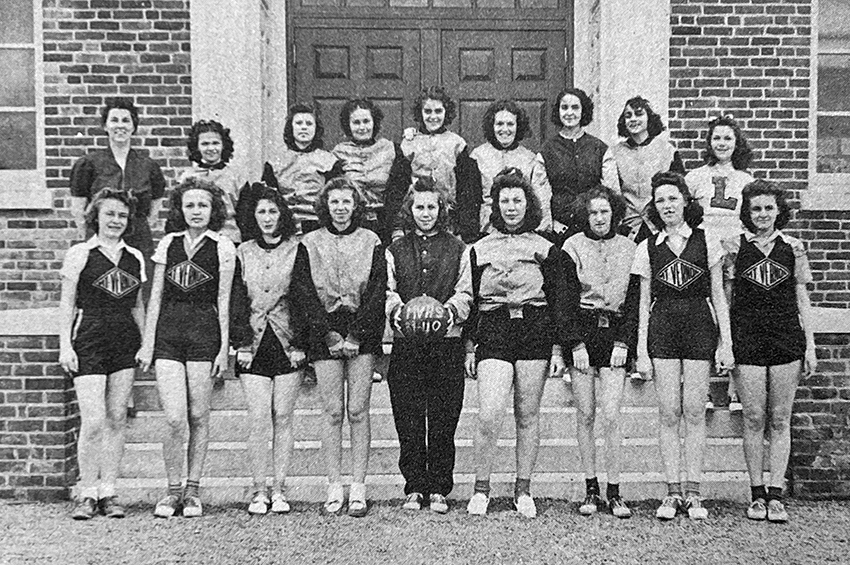
Keeping Pace With Growth
On June 13, 1940, Mount Vernon High School’s first senior class graduated. 50 students crossed the stage at the Reed Theater in Alexandria to receive their diplomas. Graduations, indoor athletic competitions, and school dances all took place at separate locations from Mount Vernon, because the school had been constructed without an auditorium and gymnasium.
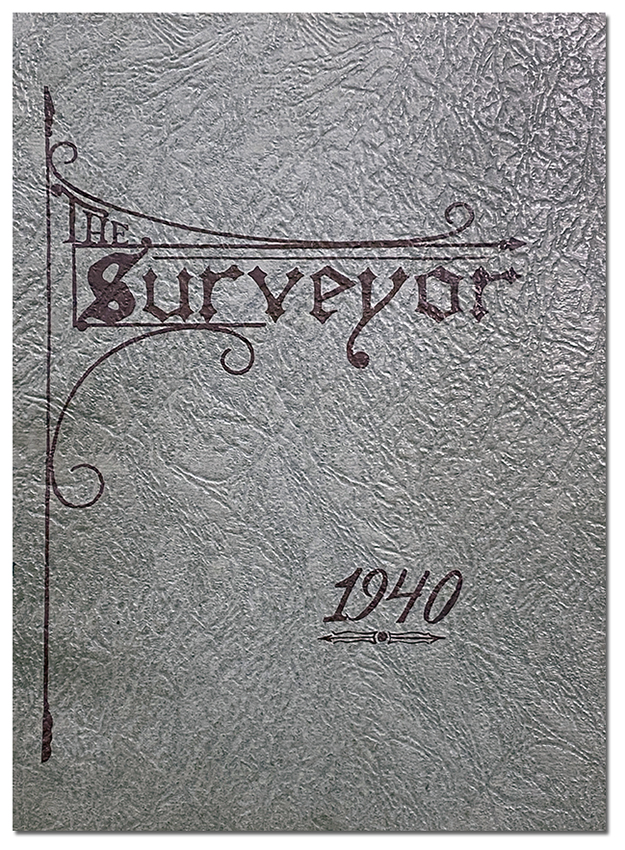
From 1940 to 1955, enrollment in FCPS steadily climbed from about 6,500 students to more than 33,000 students. Six additions to Mount Vernon High School were constructed during that same period.
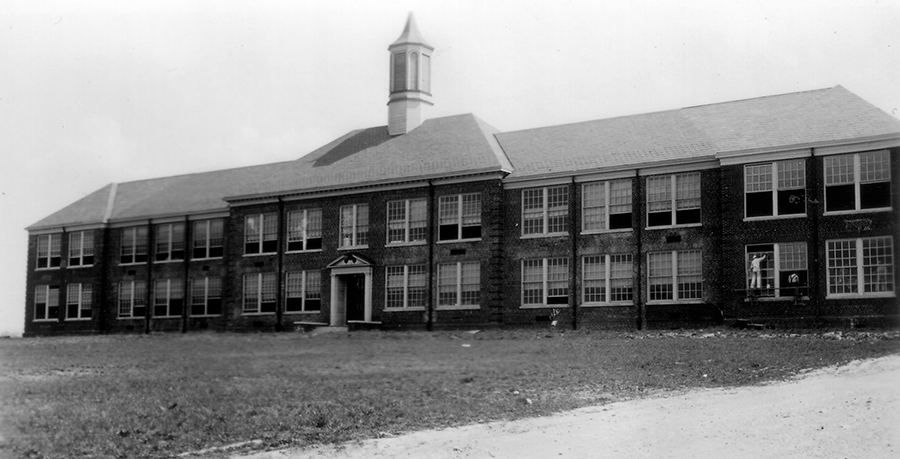
In addition to new classrooms in the main building, the 1942 addition included separate buildings for home economics and shop classes. The shop building was later converted into a dwelling for the school’s janitor.

A second shop building was constructed in 1944, followed by another classroom addition to the main building in 1947.
The main building contains 16 classrooms, two laboratories, three offices, a library, and a small canteen. The library has 3,413 volumes and subscribes to 36 magazines and five newspapers. The big undertaking this year for both PTA and student government is the raising of funds for the construction of a playing field and bleachers. The building has no large assembly room, no auditorium, gymnasium, or cafeteria. Enrollment at the beginning of the year was 635 students, about 100 more than last year. The journalism class prints the school newspaper “Em Vee Hi” once a month. Sports include football, basketball, and baseball for the boys, and basketball and softball for the girls. ~ Fairfax Standard, February 7, 1947, Page 4 – “Know Your Schools”
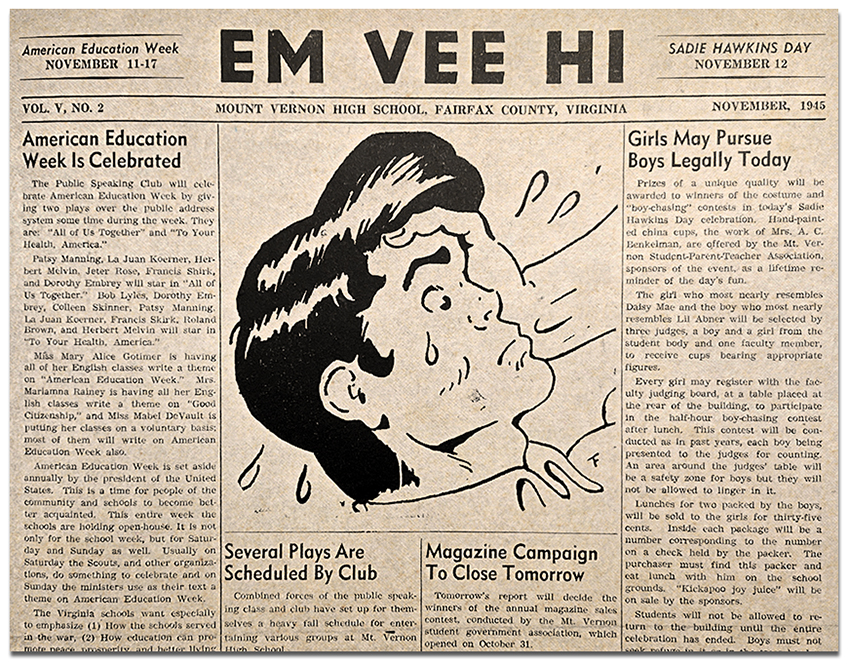
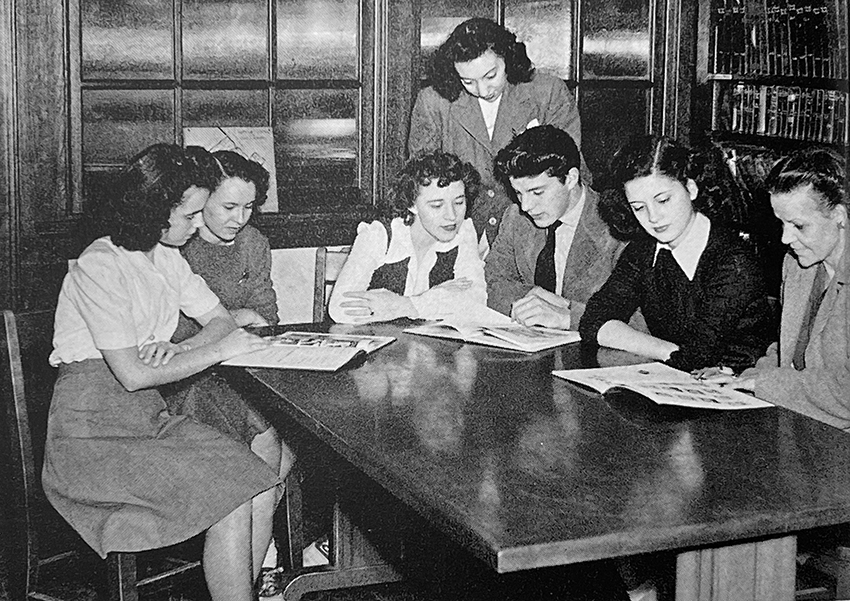
At the meeting of the School Board this week, a delegation appeared urging the building of a gymnasium at the Mount Vernon High School. They were advised that while the Board had planned to do so, no funds are at present available. ~ The Fairfax Herald, May 21, 1948
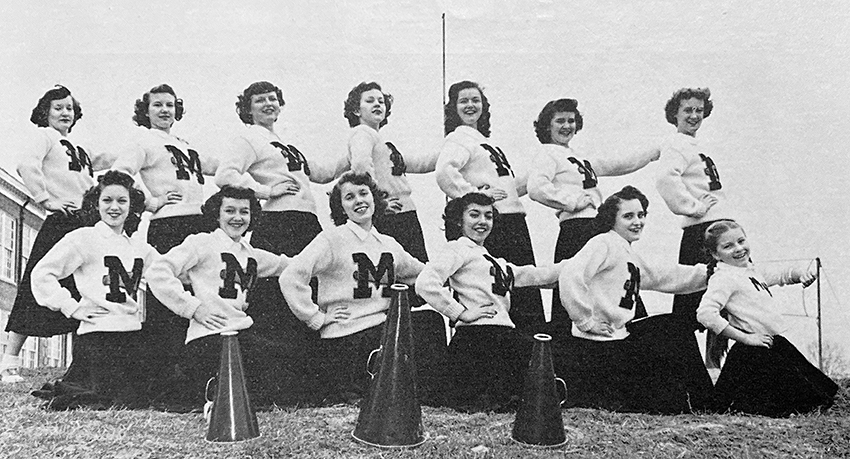
As enrollment continued to climb in the early 1950s, several Quonset huts were installed at Mount Vernon.
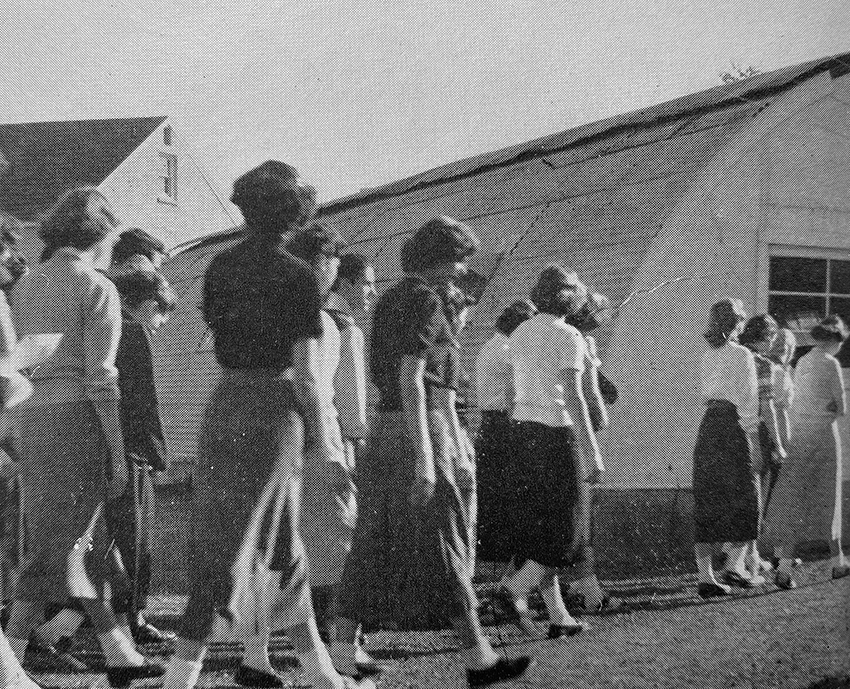
In 1951, construction began on a new library, cafeteria, kitchen, music room, and an auditorium. The gymnasium was built in 1953. Prior to the completion of those facilities, basketball games and practices were held at Lee-Jackson Elementary School, and graduations and prom were held at the Reed Auditorium in Alexandria, and the Willard Hotel in Washington, D.C.
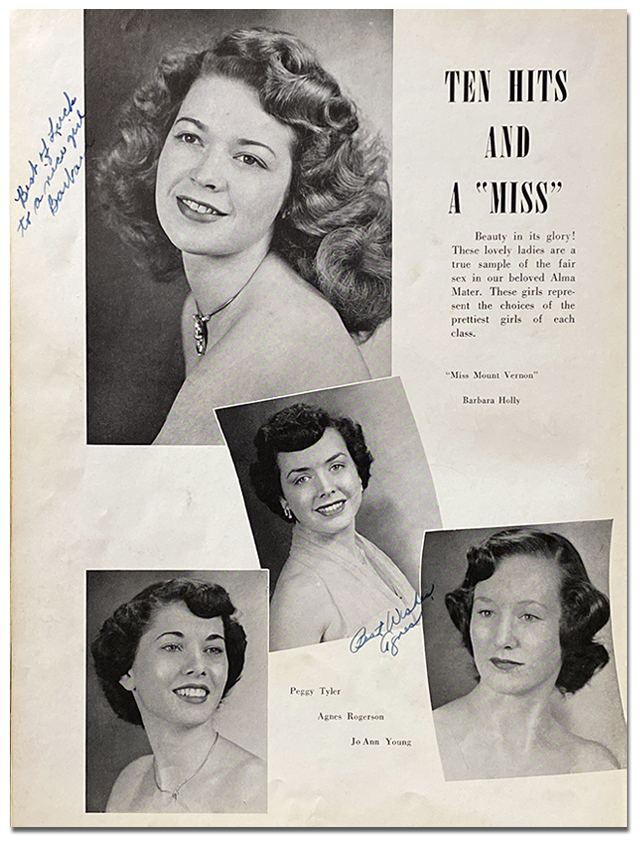
From 1952 to 1955, enrollment at Mount Vernon High School swelled from 1,299 to 1,850 students. Relief to the overcrowding came with the opening of Groveton High School in 1956.
Attention, attention! The first dance to be held at Mount Vernon High School is coming!!! The big event will be held in the cafeteria of Mount Vernon on March 26th – tonight! Music is to be furnished by the Ajax Orchestra. The dance is sponsored by the Newspaper Club. Hope to see you all there. It is hoped that this “first” at M.V. will be a big success. ~ Fairfax Standard, March 26, 1954
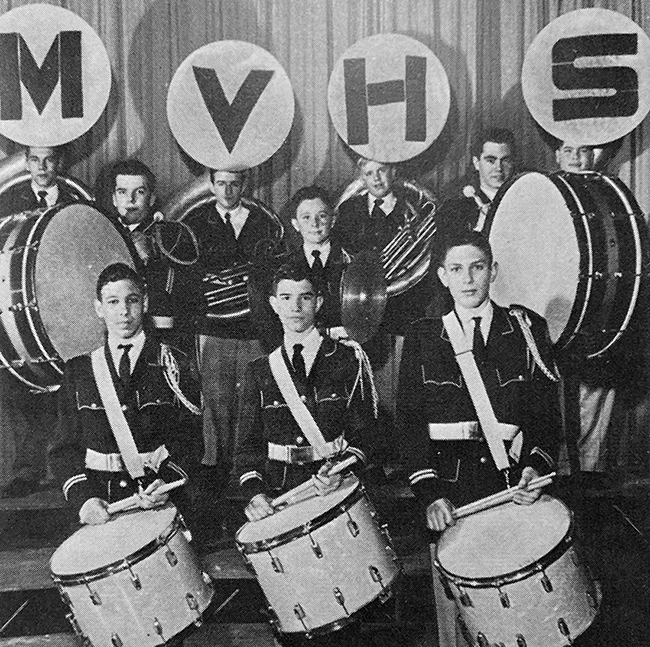
The seventh and final addition to Mount Vernon High School was constructed beginning in 1962. At that time, Mount Vernon had an enrollment of some 1,850 students.
One part will include… a music wing, including a choral room, an instrumental music room, a music classroom, five practice rooms, a combination library-office, and two storage rooms. Another part will include locker rooms and showers, a corrective gymnasium, and two health laboratories. A third part will include a new physics lab, a general science lab, an art and drafting classroom, etc. ~ Northern Virginia Sun, February 21, 1962
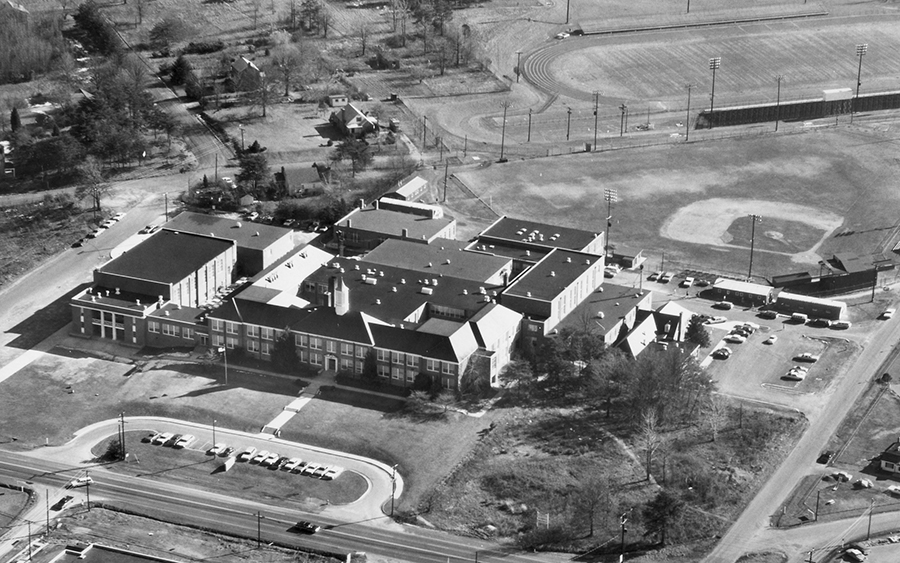
Did You Know?
During World War II, FCPS experienced staffing shortages because male teachers, custodians, and bus drivers were called into military service and some female teachers left for higher paying positions in the Federal government. Mount Vernon High School experienced several changes as a result, including the discontinuation of its course offerings in Latin. In 1942, teachers Carl Levin, Frank Morse, and Henry Gasson were drafted into the armed forces. After custodian John Lowe resigned, students in Mount Vernon’s Victory Corp took over his duties.
Principal G. C. Cox of Mt. Vernon High School reports that [sic] the entire janitorial service for the school has been undertaken by the students. During the Christmas holidays 65 students relieved the man-power shortage in essential occupations by working a total of 6,385 hours and earned $2,443. In addition, Victory Corps members are conducting bond and stamp sales and in a very efficient manner they are following-up their former graduates who are in the armed forces of the United States. ~ The Fairfax Herald, March 26, 1943
A Change in Leadership
In 1945, Principal G. Claude Cox resigned and accepted a principalship in Wytheville, Virginia. He was succeeded at Mount Vernon by Melvin Bowman Landes, who had served previously as the principal of Lee-Jackson Elementary School. Principal Landes went on to lead Mount Vernon for 28 years, from 1945 until his retirement in 1973.
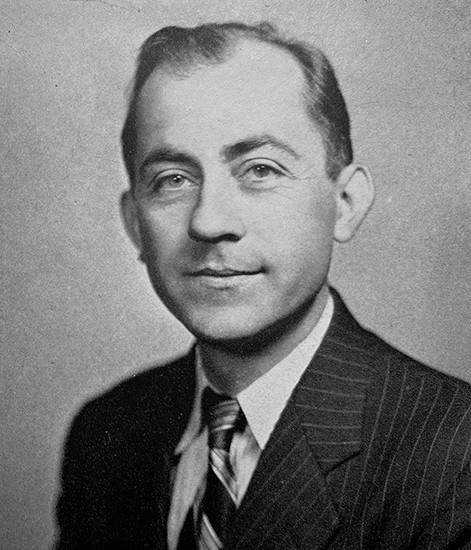
Alma Mater, 1960
Mount Vernon, Mount Vernon we sing to thee,
Your spirit and honor, humble and free.
Our praise to thee we sing; your bells of truth shall ring.
Mount Vernon, Mount Vernon praises to thee we sing.
Desegregating Mount Vernon
In 1954, the landmark Supreme Court case Brown v. Board of Education declared that laws creating separate public schools for white and Black children were unconstitutional. From its founding in 1870 until the mid-1960s, FCPS operated separate schools for white and Black children. Originally an all-white high school, Mount Vernon desegregated in September 1963, when 17 Black students were admitted. The number of white children enrolled in Mount Vernon at that time was approximately 1,430.
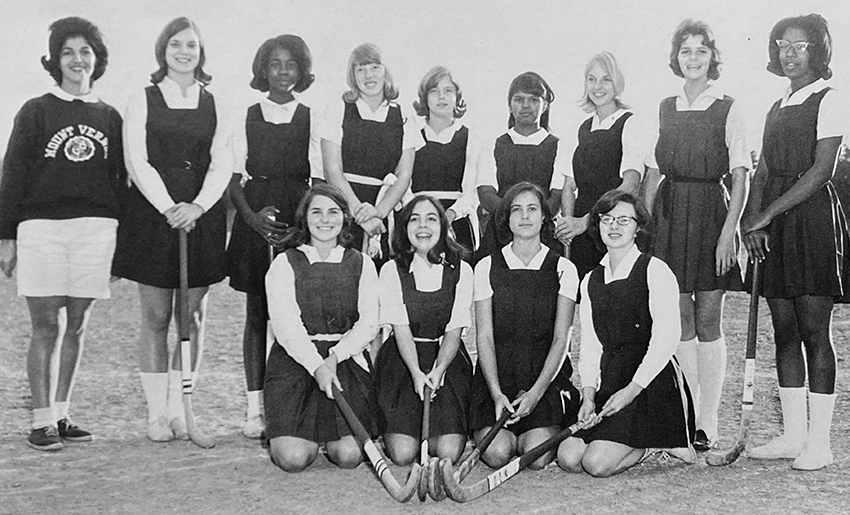
By the end of the 1963-64 school year, 34 Black students were enrolled at Mount Vernon High School. Some of the students had previously been enrolled at Luther Jackson High School. Others had matriculated into the ninth grade from Bryant Intermediate School.
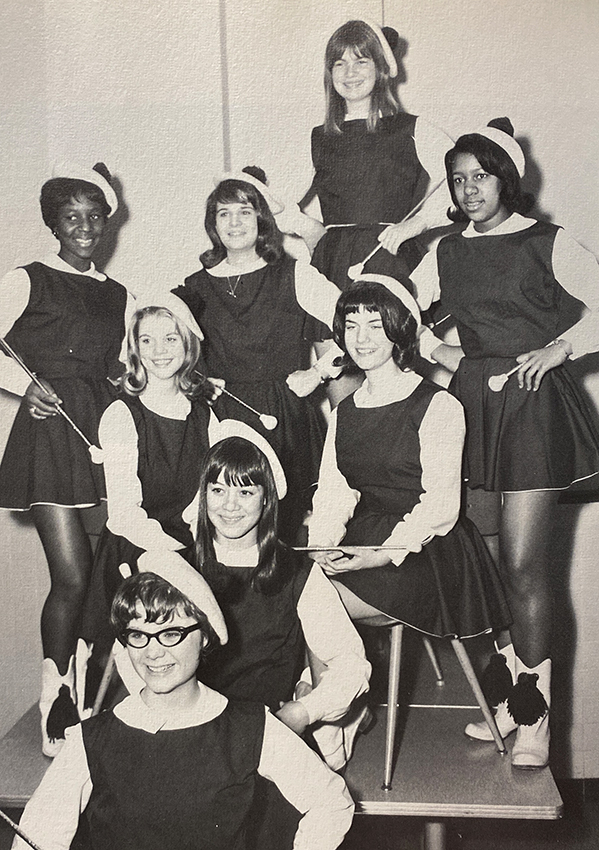
In the fall of 1964, another 30 Black students who lived on post at Fort Belvoir were admitted to Mount Vernon.
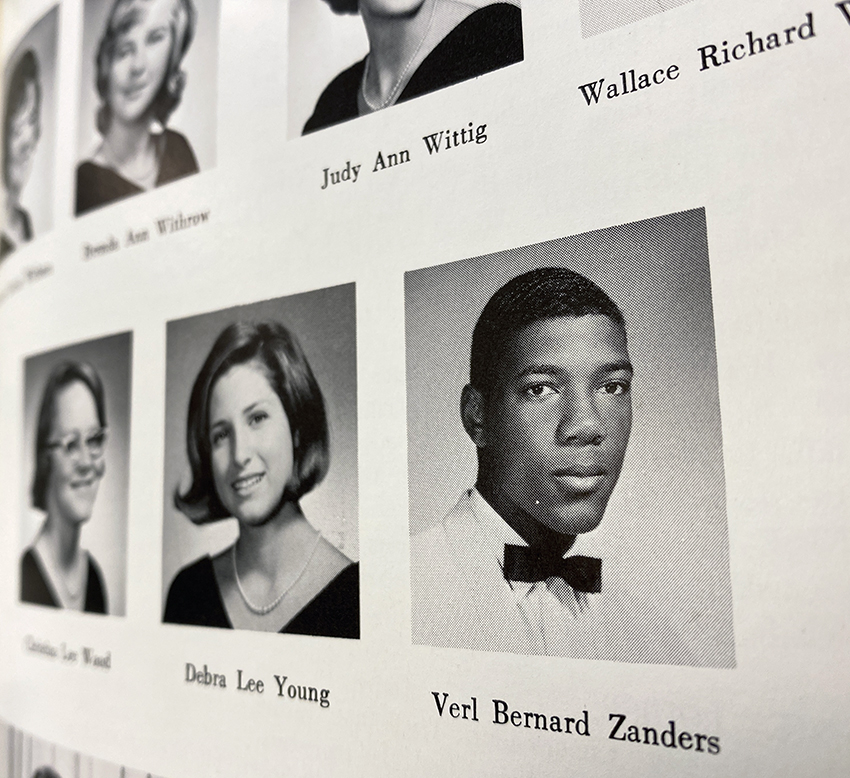
The teaching staff at Mount Vernon High School integrated in 1965, when Eugene Skinner joined the faculty as a science teacher. Mr. Skinner had previously taught science at Luther Jackson High School.
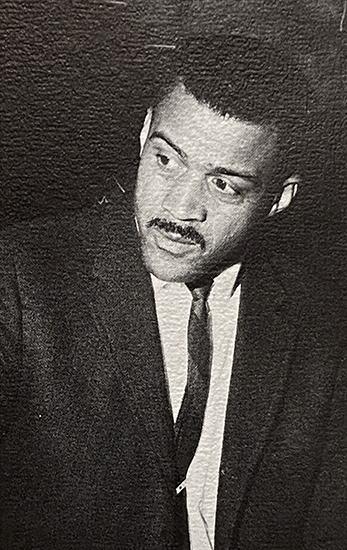
A New Building
By the late-1960s, Mount Vernon High School had become severely overcrowded. The campus was landlocked, which prevented further expansion of the facility. In 1967, the School Board directed FCPS staff to begin planning for the conversion of Walt Whitman Intermediate School into a high school to replace Mount Vernon.
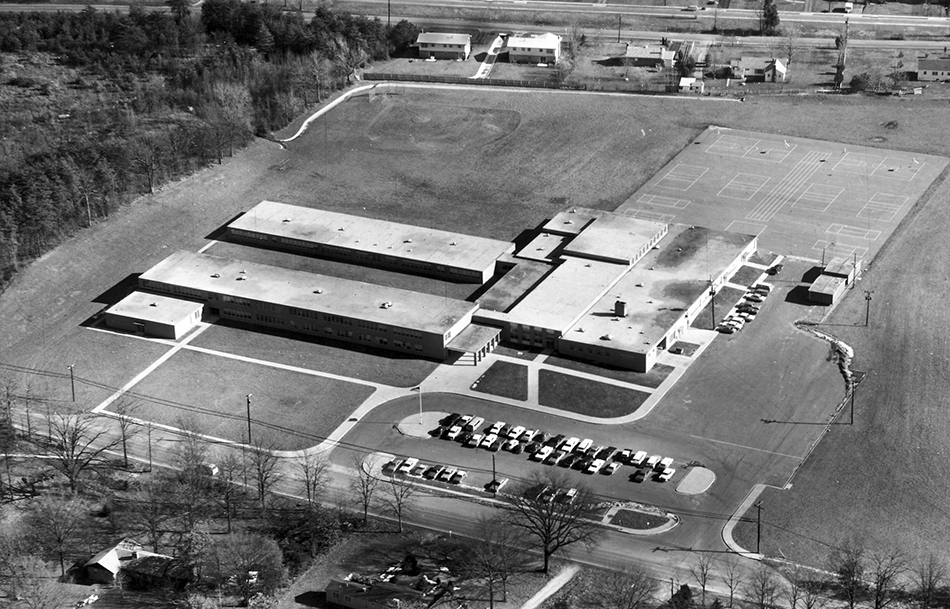
Built at a cost of $6.5 million, the new Mount Vernon High School on the former Whitman campus opened to students on September 4, 1973.
